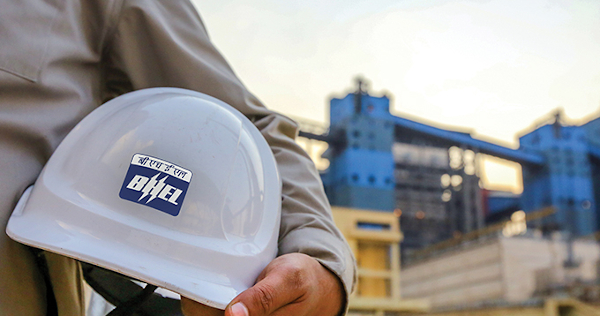India may soon manufacture its own super alloy steam turbine rotors for efficient coal based thermal power plants – thanks to a facility being set up by Bharat Heavy Electricals Limited (BHEL) to assess Low Cycle Fatigue effects in rotors required for such power plants.
Improving technologies to increase the efficiency of coal based thermal power plants requires use of nickel based super alloy materials as against chrome based steels widely used now. The nickel based Alloy 617M has been selected by the Indian Advanced Ultra Super Critical (AUSC) consortium.The alloy is industrially available and the AUSC consortium has already expressed confidence in indigenous development of the alloy. However, lack of experimental data onperformance of Alloy 617M rotors hinders effective usage of this alloy in the Indian AUSC power plant.
To overcome this challenge, Department of Science & Technology under Clean Energy Research Initiative has supported a project to BHEL (R&D), Hyderabad for establishment of High Temperature Spin Test Rig (HTSTR).
It will be the first facility in India for experimental validation of the design of AUSC steam turbine rotor relating to creep – fatigue damage (deterioration of metals and alloys subjected to a cyclic thermo mechanical load at elevated temperature) and will also be the only one of its kind in India in terms of establishing a real size engineering experimental set-up. It will subject the turbine rotor segments of weight upto 9000 kilograms to various damage conditions similar to that in the plant operation, like high temperatures upto 800 degree Celsius, high speed upto 3600 Revolutions Per Minute (RPM), followed by long term steady state operation and controlled heating and cooling. The facility will pave the way towards Atmanirbhar Bharat in this sector.
This facility will enable design validation of 800 MW AUSC steam turbine rotors for certifying the long term performance of Super alloy Monometallic and Bimetallic welded rotor with a total of 2000 startups (Hot+warm+cold) and 100000 hours of total steady state operation. This is achieved through accelerated testing within 200 cycles and 10000 hours respectively. A unique test protocol for accelerated testing is formulated by the BHEL team with the guidelines of ASME standards. Two rotor segments – Monometallic (Alloy 617M) and Bimetallic welded portions (Alloy 617M and 10 Chrome) of actual steam turbine rotor will be subjected to equivalent operating conditions over its guaranteed time line by increasing the temperatures and achieving desired thermal gradients within the rotors, during the heating and cooling operations.
This unique test protocol and its visualization software are registered under Indian patents and copyrights act. Some of the technical highlights in the test methodology are published in national conferences.
Source: Constructionweekonline
You may also like
-
Dot Simplifies Approval Processes For Telecom Licenses And Wireless Equipment
-
PM to Inaugurate SEMICON India 2024 on 11th September
-
Shri Piyush Goyal Sets 500 Million Tonnes Domestic Steel Production Target by 2034
-
NHAI to Track Around 100 Toll Plazas with GIS-Based Software for Seamless Movement of Traffic at National Highways
-
“Marching Towards Building A Digitally Connected Bharat and An Atmanirbhar Telecom Sector”: Union Minister Jyotiraditya Scindia
